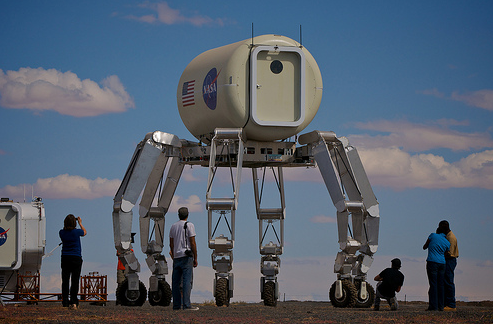 The show begins at sundown, August 12, when Venus, Saturn, Mars and the crescent Moon pop out of the western twilight in tight conjunction. All four heavenly objects will fit within a circle about 10 degrees in diameter, beaming together through the dusky colors of sunset. No telescope is required to enjoy this naked-eye event.
The show begins at sundown, August 12, when Venus, Saturn, Mars and the crescent Moon pop out of the western twilight in tight conjunction. All four heavenly objects will fit within a circle about 10 degrees in diameter, beaming together through the dusky colors of sunset. No telescope is required to enjoy this naked-eye event.
The planets will hang together in the western sky until 10 pm or so. When they leave, following the sun below the horizon, you should stay, because that is when the Perseid meteor shower begins. From 10 pm until dawn, meteors will flit across the starry sky in a display that’s even more exciting than a planetary get-together.
The Perseid meteor shower is caused by debris from Comet Swift-Tuttle. Every 133 years the huge comet swings through the inner solar system and leaves behind a trail of dust and gravel. When Earth passes through the debris, specks of comet-stuff hit the atmosphere at 140,000 mph and disintegrate in flashes of light. These meteors are called Perseids because they fly out of the constellation Perseus.
For best results, get away from city lights. The darkness of the countryside multiplies the visible meteor rate 3- to 10-fold. A good dark sky will even improve the planetary alignment, allowing faint Mars and Saturn to make their full contribution to the display. Many families plan camping trips to coincide with the Perseids. The Milky Way arching over a mountain campground provides the perfect backdrop for a meteor shower.
Link to the NASA Explorer Schools Virtual Campus home page.
 NASA’s Desert RATS, or Research and Technology Studies, will make its 13th trip to the desert this fall for another round of analog testing.
NASA’s Desert RATS, or Research and Technology Studies, will make its 13th trip to the desert this fall for another round of analog testing.
 Have you ever wanted your students to gain real-world science experiences, but you aren’t sure where to go? Then check out the Mars Exploration Student Data Teams, or MESDT, program offered by NASA, Arizona State University’s Mars Education Program, and the Mars Reconnaissance Orbiter. In this free program, student teams work with scientists, mission planners and educators on the CRISM (Compact Reconnaissance Imaging Spectrometer for Mars) team at Johns Hopkins University’s Applied Physics Laboratory (
Have you ever wanted your students to gain real-world science experiences, but you aren’t sure where to go? Then check out the Mars Exploration Student Data Teams, or MESDT, program offered by NASA, Arizona State University’s Mars Education Program, and the Mars Reconnaissance Orbiter. In this free program, student teams work with scientists, mission planners and educators on the CRISM (Compact Reconnaissance Imaging Spectrometer for Mars) team at Johns Hopkins University’s Applied Physics Laboratory (
 The RealWorld-InWorld NASA Engineering Design Challenge invites high school students to work cooperatively as engineers and scientists to solve real-world problems related to the James Webb Space Telescope.
The RealWorld-InWorld NASA Engineering Design Challenge invites high school students to work cooperatively as engineers and scientists to solve real-world problems related to the James Webb Space Telescope.
 NASA is inviting the public to choose an area in northern Arizona where explorers will conduct part of the annual Desert Research and Technology Studies, known as Desert RATS.
NASA is inviting the public to choose an area in northern Arizona where explorers will conduct part of the annual Desert Research and Technology Studies, known as Desert RATS.